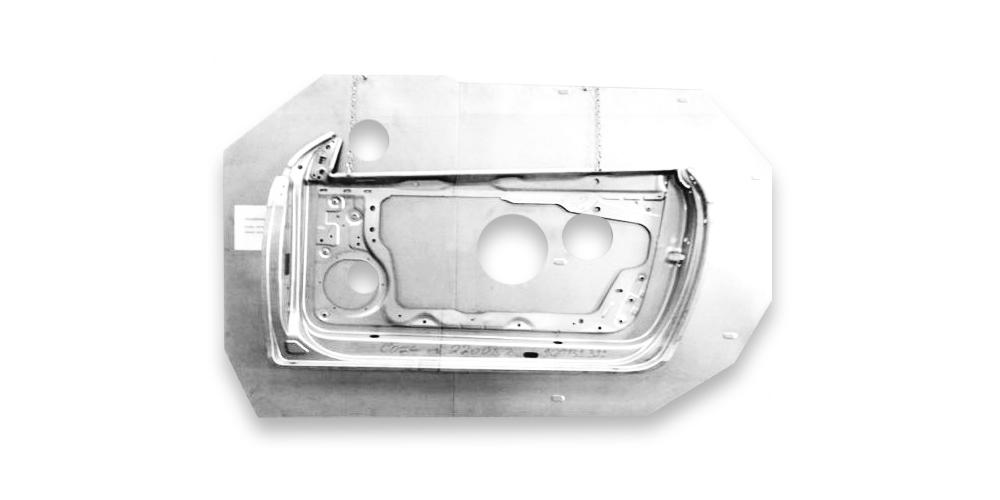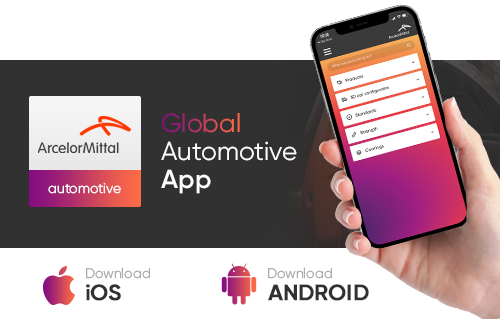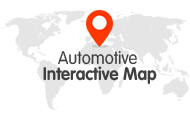Products
Product pages available in
EN - DE - FR - ES
Sustainability
News, events and stories
Formatos para soldadura por láser para estampación en frío
La primera aplicación para formatos para soldadura por láser (LWB) fue sustituir la soldadura de solapamiento de subformatos estampados en frío. Los LWB ofrecían una gran ventaja: una transmisión de energía más suave y directa entre dos subformatos en caso de accidente. Otra ventaja importante de la soldadura por láser es una soldadura y una zona afectada por el calor muy estrechas.
Normalmente, esta zona soldada por láser se hace más dura que el metal de base debido a procesos metalúrgicos que tienen lugar a medida que se enfría la soldadura.
Esta área más dura limita el proceso de conformación y dificulta que se puedan obtener formas 3D complejas mediante estampación. La soldadura no actúa como un obstáculo, pero fluye hacia la deformación junto con el material de base.
ArcelorMittal desarrolló un software especializado para simular el proceso de conformación. El software también puede optimizar la topología del formato. Esto permite que se puedan estampar en frío piezas complejas a partir de un LWB.
Con la amplia aplicación de acero avanzado de alta resistencia (AHSS) en carrocerías de coches, el uso de LWB también está aumentando. Al utilizar AHSS con cambios de espesor localizados, pueden obtenerse mayores reducciones de peso y una mejor gestión de los impactos al mismo tiempo.
Como los grados de AHSS tienen una resistencia muy alta, son difíciles de esmerilar después de la estampación. Nuestra división de formatos a medida puede entregar formatos moldeados que requieren muy poco esmerilado.
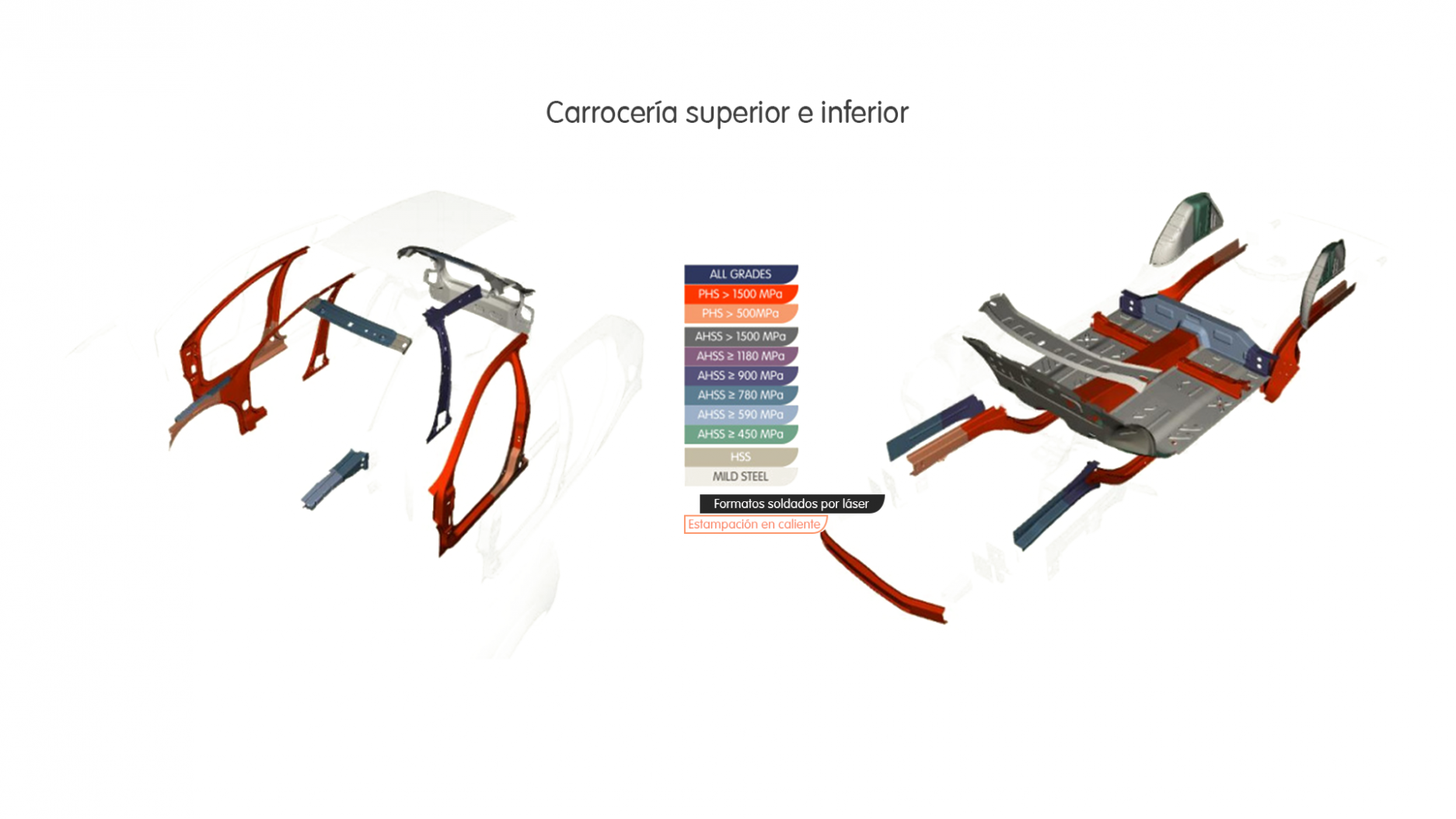
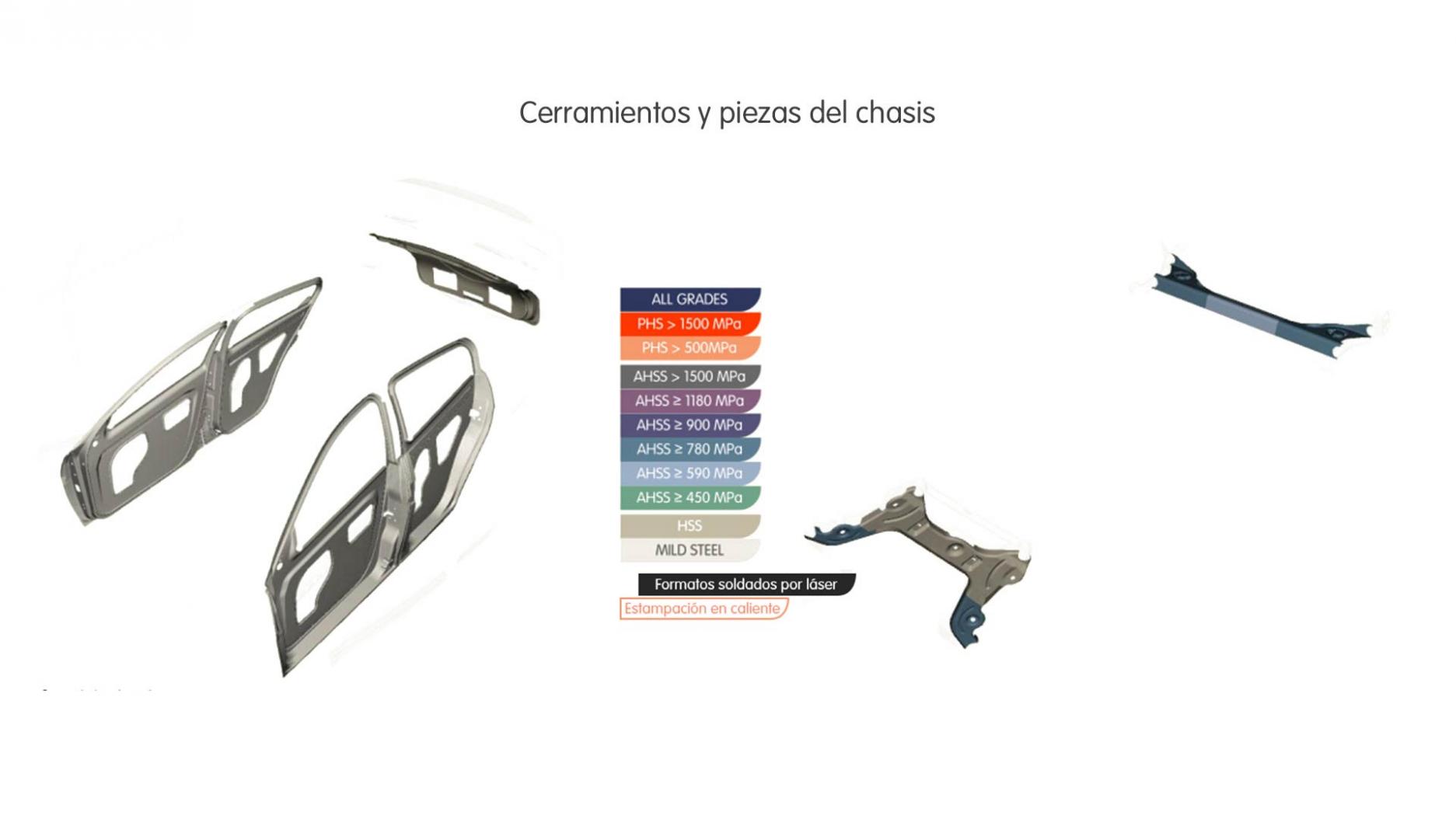
Aplicaciones para formatos de soldadura por láser para estampación en frío

Soldadura de formatos de soldadura por láser para estampación en frío

